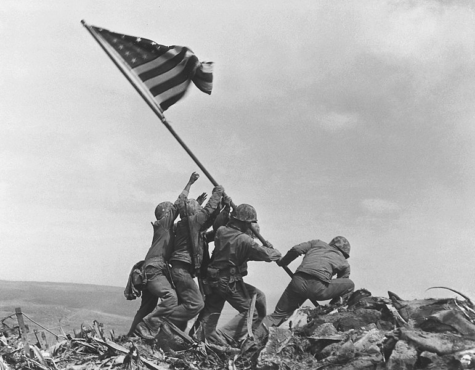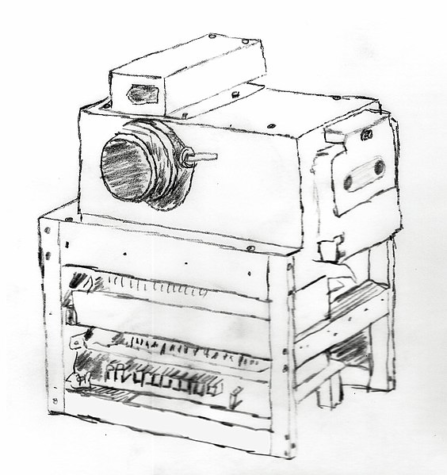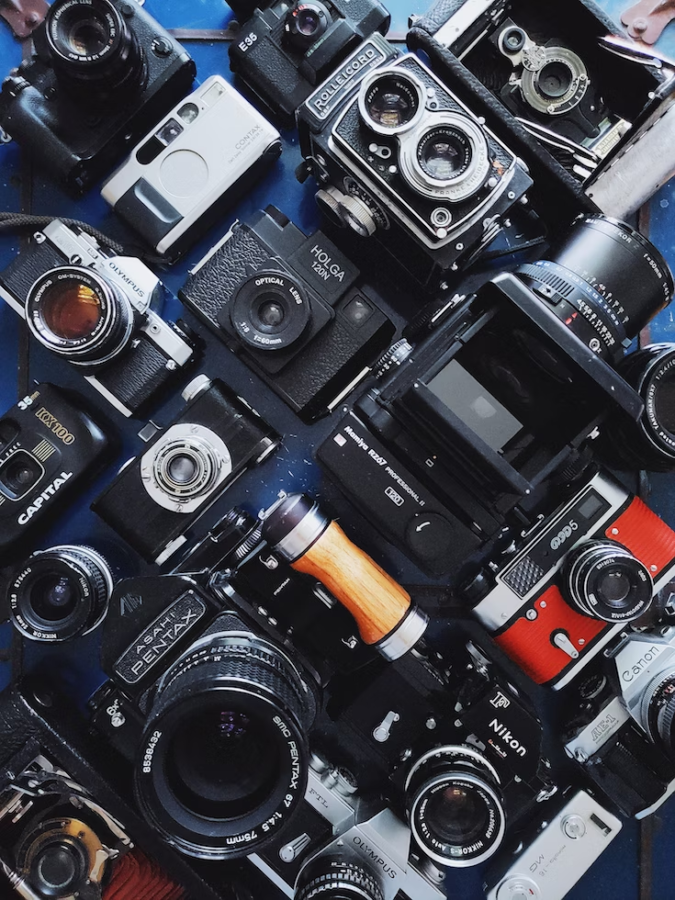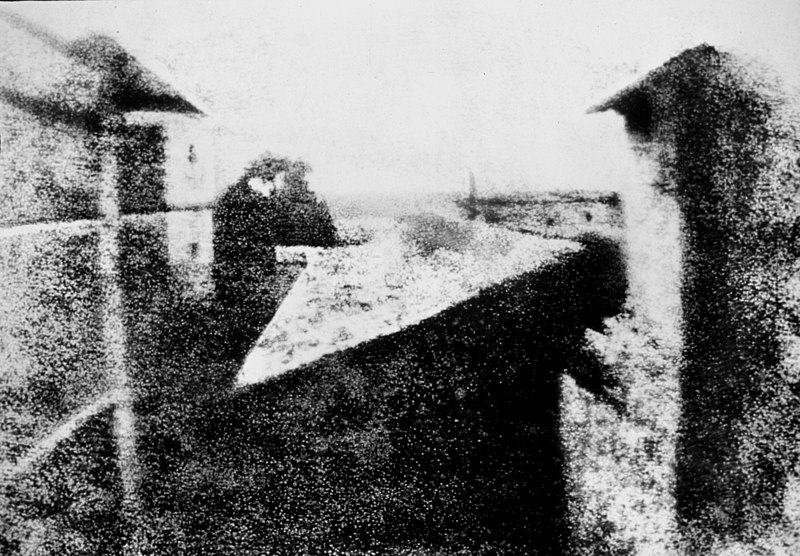The Past, Present, and Future of Cameras
A brief history of cameras and a celebration of National Camera Day and the accomplishments of photographers worldwide.
National Camera Day held annually each year on June 29th is a day in which we celebrate the accomplishments of the many inventors and contributors of photography. From the first pinhole chamber in 400 B.C. to the complex rigs of motion picture cameras, to the innovators and photographers that shaped the community, on this day we look back and celebrate the long history of cameras.
The origin of the word ‘camera’ comes from the Latin camera or camera obscura, meaning “dark chamber.” Making a small hole in this chamber would focus rays of light through it, creating an image inside the room. This is referred to as the pinhole effect, and it has been referenced by ancient mathematicians and philosophers like Aristotle and Leonardo Da Vinci. Many artists in the 18th century used this tool as a guide to easily draw scenes of daily life. However, it took until 1816 for French inventor Nicéphore Niépce to use this idea to create the first camera and the oldest surviving photographs.
Nicéphore Niépce, born in 1765, is credited to be the inventor of photography. He studied at the Oratorian College in Angers, France, where he learned science and the experimental method. The experiments which led Niépce to invent the camera were inspired by his interest in the new art form of lithography, a type of printmaking using oil to create images on various mediums. With his scientific background and knowledge of camera obscura, Niépce wished to experiment and create a process combining both camera obscura and lithography.
In 1816, Niépce successfully made a photo in an experiment with a small camera using paper coated with silver chloride. However, the photo was negative, showing darkness where the light was and vice versa. He was also unable to view it when it was again exposed to light outside of the camera.
But in 1825, Niépce made the world’s first permanent photograph of a man and a horse using his heliograph process which could be viewed outside of the camera. He was able to reproduce these results a year later, photographing a view from his home in La Gras, France, which is still preserved today in a private collection.
Niépce’s heliograph process became the cornerstone of all photography and the modern-day process of capturing images.
In the 19th century, photography was used primarily for portraits of wealthy and famous people, as well as family portraits. Cameras were heavy and often needed time to expose an image so they were confined to studios. At the turn of the century, however, cameras became lighter and more widely available for individuals to use.
Brands like Leica, Canon, Nikon, and Hasselblad, to name a few, made cameras more accessible to the general public, especially Canon and Nikon. Leica and Hasselblad are two luxury camera brands based in Germany, making their products highly sought after and expensive. Their clientele often were professional journalists, photographers, and wealthy hobbyists. The price of these cameras made other companies like Canon and Nikon produce cameras for a fraction of the price while maintaining the quality that other brands provided.
The innovations of lighter cameras opened up a multitude of opportunities for photographers. Pioneer photographers like Edward Weston and Ansel Adams practiced “Precisionism,” in which they believed that photographs should be captured as the photographer saw them. They did nothing to obscure the subject or change the perspective of the camera in any inorganic way, photographing the world as they found it. They often captured landscapes of the American West in vivid detail, leaving out conventional artistic expression and instead using their skills in composition and lighting to make striking images.
Cameras became documentary tools, being used primarily for newspapers and advertisements. They also found use in the military as intel-gathering tools and were later used to document various parts of wars.
Photography progressed not just as a tool but as an art form, the same as painting or drawing. Photos were used as a means of protest and to inform the country of the injustices that happened in different parts of the world.
Iconic photos like “Raising the Flag on Iwo Jima” (pictured at right) depicting American soldiers raising the US flag during World War II, or “Tank Man” depicting a young Chinese man standing in front of a column of tanks during the Tiananmen Square protests of 1989 are symbols of unity and protest known worldwide.

Photographers also used the technology for artistic expression. Many photographers used their cameras for art and created innovative ways to take photos. They often played with their composition and lighting, sometimes obscuring the subject or isolating it to emphasize a feeling of loneliness, or perhaps using an object in the foreground to interestingly frame the subject.
The invention of video cameras created an entirely new genre for the medium and gave artists a new approach. Early films like those of Charlie Chaplin were in black and white and without sound, but as technology advanced and cinematographers learned to use this new medium, our favorite movies emerged and cemented themselves in pop culture.
“A good film that I admire is ‘The Lighthouse,’ directed by Robert Eggers for its powerful use of light and the lack thereof. The restriction of natural light in sections of the movie intentionally makes time vague and claustrophobic in some cases. The choice to shoot the film on black and white film also adds to the unique atmosphere and pays homage to brilliant filmmakers like Alfred Hitchcock,” said Fairuz Raya ’23.
The invention of color film added another dimension to the creative process. Values of color, color theory, and lighting gave photographers and cinematographers more tools to use in their work.

Joel Meyerowitz, an American photographer known for his use of color and profound compositions, has had a long career in photography, stretching from as early as 1963. He was inspired by the work of Robert Frank and Henri Cartier-Bresson and the candid nature of their photographs. One of Meyerowitz’s most famous photographs entitled “Kiss Me Stupid” is a photo he took in New York, in 1965 on New Year’s Eve, showing a couple kissing isolated from the rest of the busy crowd.
Today, he is 85 years old, but still remains an active member of the photography community, hosting galleries of his work as well as having classes for aspiring photographers to learn the art of photography.
For a long time, film was the only way to take photos and many people didn’t understand how to take them and develop them unless they were experts in the field. However, the emergence of disposable cameras created a new culture marketed towards any families that wanted to document their vacations and everyday lives.
The process was simple; buy a disposable camera from any retail store, take your photos, then return it to a store that has a photo lab like CVS or Walgreens. They would process your film and you could come back in a few days to receive printed versions of your photos. The stores even provided services to print multiple copies of a photo to be able to share it with other family members or friends.
Film photography, however, had its limitations. Depending on the film, you could typically only take 36 photos per roll, or even less depending on the format of the photo. While rolls of film were generally cheap, professional photographers needed multiple rolls of film daily, becoming a recurring expense.
“Yes, film photography does get expensive at times, especially now with limited producers of film. However, I will never give up using film because of the unique experience of using it, along with the vibe that the photos printed from film create,” said Louisiana Stahl ’23.
Yet this wasn’t a concern to the large camera companies or professional photographers. Many people didn’t have any issues with buying film nor wished for an alternative. In fact, the first digital camera was created without the thought of it becoming the way people took photos.
Steve Sasson, a young electrical engineer at the Eastman Kodak Company, was working with scraps in 1975 and unintentionally invented the first digital camera. At Kodak, a Rochester-based camera company that specializes in film production, Sasson worked in research and development and was working on creating a charge-coupled device (CCD). A CCD was a circuit of coupled capacitors that is now commonly used in digital imaging sensors in most cameras.

Sasson worked for two years to create a prototype of his camera. The camera was entirely electronic and was “about the size of a toaster.” When he was finished building it, however, many at the company did not believe that he had invented something special; they were skeptical of the camera’s usefulness and reliability. Sasson kept the construction of his camera very secretive, and the company was hesitant to jump on this new technology.
There was no demand in the market for the prototype, and it went under the radar for most consumers. The digital camera instead was used for militaristic and scientific purposes.
It would not be until 14 years later in 1989 that Fujifilm made the FUJIX DS-X, the first available commercial digital camera. It functioned similarly to modern digital cameras with a digital sensor that captured light and was able to store images without film. The camera was introduced at a time when analog technology was transitioning to digital, making it a marketable and highly profitable product for Fujifilm.
This marketing campaign marked the end of film and the beginning of digital cameras as the mainstream tool for professionals and consumers alike.
Digital cameras quickly became the main focus of the camera industry. Inventors and camera technicians never stopped innovating, creating lighter, faster, and sharper cameras for professionals and hobbyists. Fewer and fewer people used film cameras and opted to buy the new and popular digital counterpart.
However, digital cameras didn’t deter people from abandoning film photography. In fact, in recent years, film photography has made a resurgence in popularity among young people seeking a slower and more intentional way of making photos. There are film brands that never stopped supporting film like Kodak and Fujifilm, as well as modern brands like Cinestill and Lomography that are led by their love of film.
While many photographers exclusively shoot film and others shoot only digital, we all have an appreciation for the process of making photographs. Whether we take photographs for our professional careers or for our personal memories, the love of cameras has captivated millions. If you’re looking to get into the realm of cameras, there will always be a community of like-minded people for you to share your passions.
“Yes, film photography does get expensive at times, especially now with limited producers of film. However, I will never give up using film because of the unique experience of using it, along with the vibe that the photos printed from film create,” said Louisiana Stahl ’23.
Thommy Taing is a Staff Reporter for ‘The Science Survey.’ Thommy finds writing that tells stories the kind that is most appealing. This type of writing...













